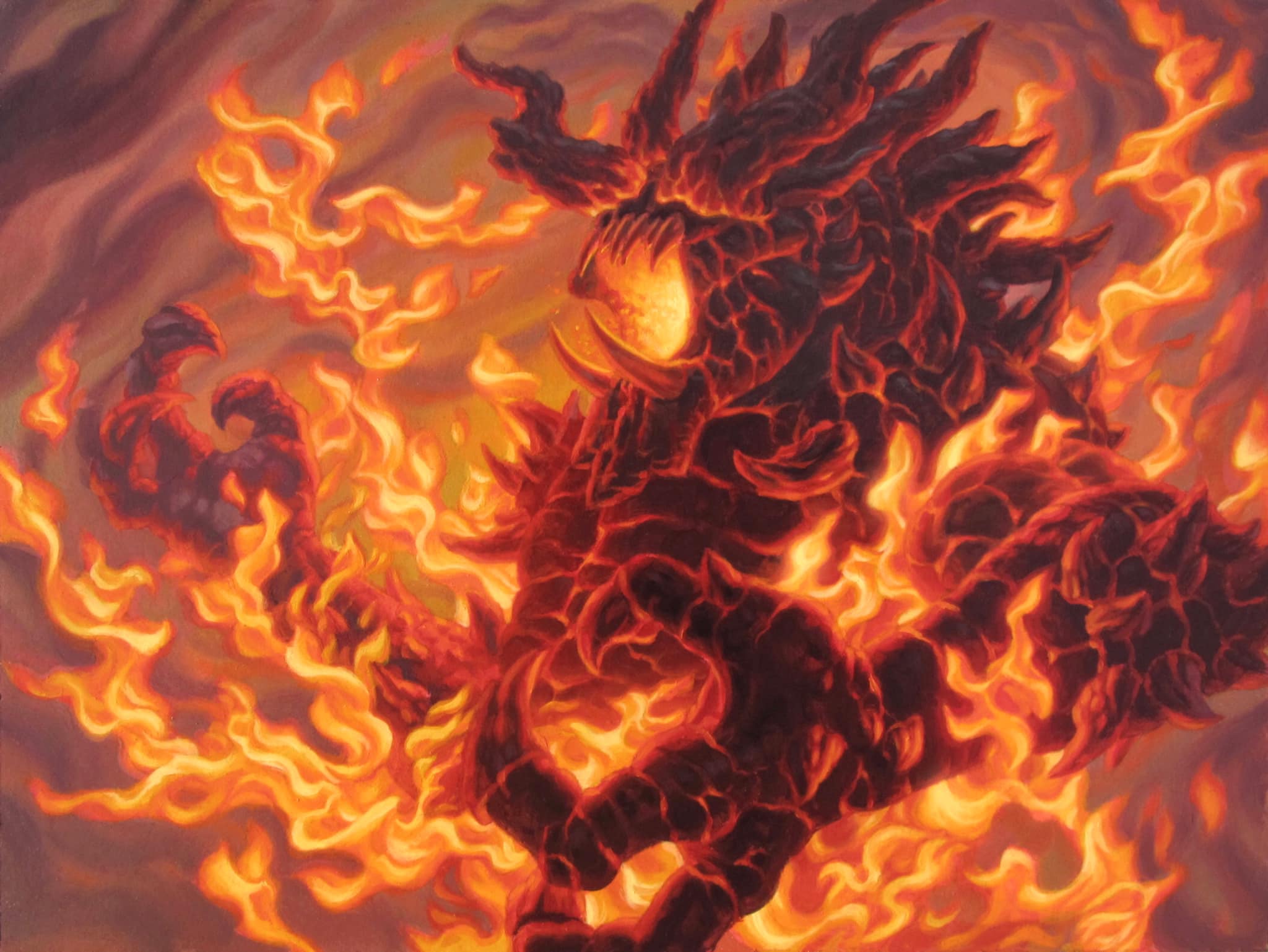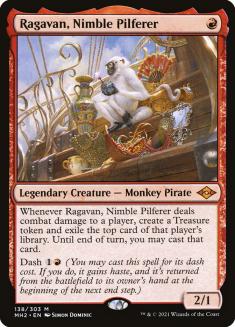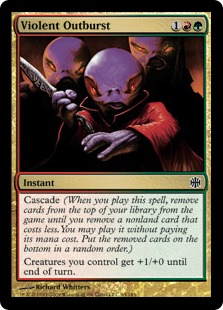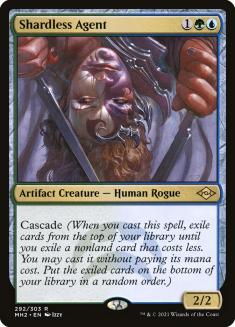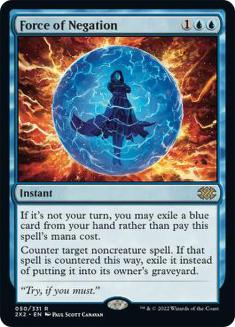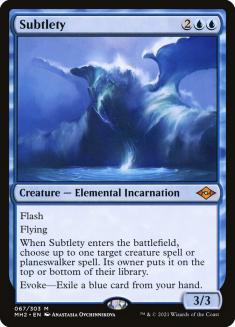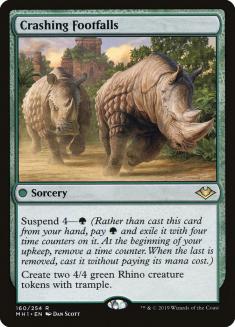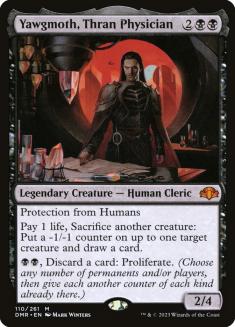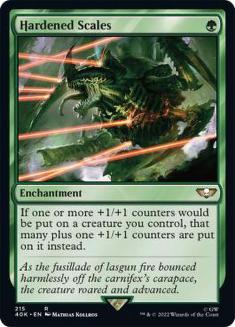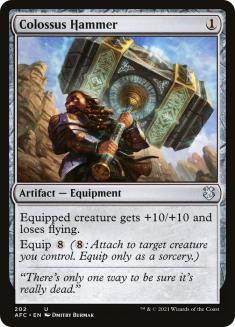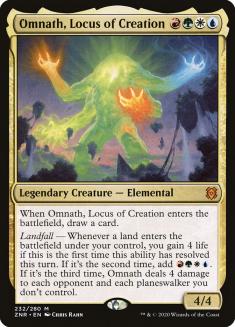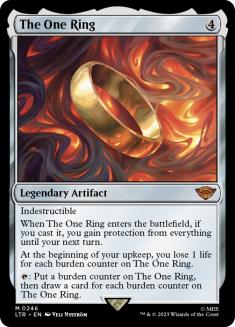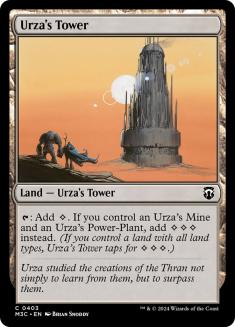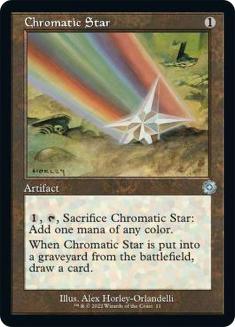You didn’t get your hopes up, did you?
The first verdict on Fury-less Modern is the funniest one I could have imagined. The Fury ban was meant to free Modern from the tyranny of Rakdos Evoke. After taking the title at the Pro Tour, Rakdos continued its reign of terror at every level of Modern play, generating such ill-will that it was on track to earn Modern Horizons 2 its first ban after more than two and a half years. After the previous announcement justified its inaction by praising the format’s diversity, both Rakdos Evoke and its biggest haters made themselves heard and forced a change of course.
With the Fury menace gone, all eyes were on the Legacy Masters Series in Barcelona last weekend for the first big post-ban Modern tournament. When the dust settled, Mariluz Garcia took the crown with… Rakdos Evoke. Of course.
How did this happen? How did it happen again?!
Let’s return to our question from last week. What cards or decks are kept out of Modern because of Fury? The small creature decks most angry about it have a lot of other things on their mind, from Orcish Bowmasters and Yawgmoth, Thran Physician to Living End and The One Ring. If those decks get paired against this calmer version of Rakdos Evoke, they will have to slog through the more normal removal that fills those slots instead – you are already playing the best threats and other disruption so it makes sense to load up on Lightning Bolt and Fatal Push or new toys like Molten Collapse.
The biggest loss was actually against fast linear decks like Mono-Green Tron or Amulet Titan, where a revived Fury on Turn 1 could race all but their fastest draws. The rest of the Rakdos recipe is strong there but you need to compensate for this reduced speed in other ways. Blood Moon and similar effects may be ripe for a return – even in the maindeck, if the mirror isn’t quite the concern it was a few weeks ago.
Fury also shined against other Fury decks. Each Fury would clean up the opposing battlefield and represent a serious threat in its own right. The most impressive response was your own Fury, taking down their copy and putting the ball firmly back in their court. Rakdos mirrors or the Rakdos vs Temur Crashcade matchup would often come down to who had the last Fury standing. In an actual mirror, by definition, neither deck gains or loses more from the lack of Fury; it’s possible that Crashcade extends its lead against Rakdos, where Fury was a more essential card, but this doesn’t mean anything for the rest of the format. If your control deck didn’t care much about Fury before, your Rakdos matchup is mostly the same.
Some have argued that there’s an intriguing precedent here with another of Rakdos’s headliners. Ragavan, Nimble Pilferer was banned in Legacy to keep Izzet Delver in check after it burst ahead and took over the format yet again. Ragavan was an obvious culprit as the standout card from a recent set that could easily run away with a game when backed up by Delver’s disruption.
In practice, Ragavan mostly excelled against other blue decks. It made your deck stronger overall and was necessary to keep up in the mirror but a fragile legend was an easy pressure point for decks that could contest the battlefield with blockers or specific tools like Karakas. Without the need to play Ragavan, the post-ban Delver decks were free to turn their sights to the rest of the field and maintain their dominance there.
I don’t think that comparison holds here. Fury was so obnoxious because it had a way of being good even when it wasn’t supposed to be. Fury alone was your best card against a broad swathe of Modern and cheating out Fury on Turn 1 with Feign Death was your best tactic against most of the rest. It even had a built-in buyout against its own redundancy – just pitch one copy to another! Having eight Evoke Elementals let you justify running enough copies of Feign Death effects to reliably pull off the combo with Grief or Fury even if the other really was dead after all. Now, drawing a useless Feign Death has a real cost unless you lean more on the weaker but more versatile Malakir Rebirth to make up those numbers.
Rakdos Evoke without Fury is a much worse deck but Garcia showed it can still succeed. What next?
The announcement didn’t state such an aim and trying to preserve Rakdos Evoke at exactly the right power level to do this job without being oppressive sounds too clever by half. Whatever the goal, Mengucci may be right about the outcome – if Rakdos Evoke sticks around as one of several pillars of the format with a distinct playstyle and a useful check on other extremes, that doesn’t sound so bad.
I worry that it will feel like more of the same, though. If your main gripe with the deck pre-ban was the Turn 1 double Grief lines, losing to those isn’t any less frustrating just because there aren’t Furies tucked away in their library somewhere.
This isn’t even the only deck forcing you through the five stages of Grief!
The Cascade Comeback
“Rakdos is so back” is the obvious headline from this tournament but a broader look at the results reveals a clear winner. Temur Crashcade and Living End had a great weekend in both Barcelona and the first batch of Modern Challenges on Magic Online. Living End put three copies in the Top 8 in Barcelona while its rival fell short but rhinos were seen stampeding all over the Top 16.
Living End
Players often talk about the ‘Cascade decks’ as one entity and targeted anti-Cascade tools like Chalice of the Void or Teferi, Time Raveler are strong against both so it’s easy to assume they must sink or swim together. Their matchup against each other warps this dynamic – Living End is a nightmare matchup for Temur Crashcade, though the recent addition of Tishana’s Tidebinder helps there – but they also occupy different roles in the metagame. Living End suffered at the Pro Tour and disappeared afterwards mostly due to the success of Rakdos – stock lists featured maindeck Dauthi Voidwalker and sideboard Leyline of the Void alongside the usual pile of discard and Chalice of the Void as an anti-Crashcade measure that also happens to hose Living End. Many other decks were easy pickings for Living End especially after they stopped taking it seriously but that only gets you so far when your nemesis is the most popular deck in every tournament and the consensus best deck in Modern.
With Rakdos Evoke seemingly dead and buried, Living End was poised for a return – which made Rakdos Evoke the perfect response! Garcia sliced through five Living End opponents on her way to the win and fought through a little bit of everything else too.
Living End finds its own way to inflict maximum Grief on its victims. One-shot targeted discard like Thoughtseize remains interesting because the limit on that choice often makes it difficult. Do you take the one removal spell to clear a path for your threat or take their threat to buy yourself more time? If they have multiple copies of some effect, do you take one as the first step in breaking through that wall or use your Thoughtseize to change the terms of the game by creating some other weakness in their hand?
Repeated discard removes most of this nuance. With back-to-back Grief triggers it’s easy to clear out every spell with the same role or every relevant spell at all. Your decision of whether to keep or what card to put back when you mulligan feel pointless when any appeal to the hand might disappear right away.
At least Rakdos Evoke has to win a fair game post-Grief where lots of cards could become relevant. Living End’s core strategy gets to ignore entire classes of cards – those Unholy Heats and Fatal Pushes they left in your hand are embarrassing rejects rather than glimmers of hope – and overwhelm many more. Only certain cards are ever relevant against Living End and you need several of those in a specific window – it’s usually obvious what Living End should take with Grief in each case – and the extra layers of free interaction like Force of Negation and Subtlety cover cards that slip through the cracks. If the play patterns of Grief soured you on Rakdos Evoke, Living End is a more extreme version of that.
Meanwhile, the Rakdos matchup was – and maybe still is – the best reason to play Crashcade. It’s no coincidence that Crashing Footfalls was the Cascade hit of choice at the Pro Tour where Rakdos was the deck to beat. Fury was once an automatic four-of for Crashcade but recent iterations moved away from Fury in favour of blue stack interaction like Subtlety anyway and there’s enough removal that dodges the mana value restriction that you can fill the void left by Fury.
The ripple effect on the rest of the metagame looks different from each camp. Golgari Yawgmoth looked like a big winner from these bans as it hoped to avoid the Rakdos Evoke matchup and Fury in particular – many pundits hailed Yawgmoth as the new best deck until further notice. As before, Yawgmoth cleaned up in the online tournaments in the hands of known Yawgmoth experts but was mostly absent from the paper results.
The Living End matchup is close for Yawgmoth but you can make it much easier if you choose to care. The Crashcade matchup is notoriously bad for Yawgmoth and may now be the main reason to shy away from it.
Rakdos’s return is weirdly welcome for any deck whose strength against Rakdos was its main selling point. Hardened Scales and even a former kingpin in Mono-White Hammer will hope this wasn’t a flash in the pan.
We shouldn’t gloss over the other ban here. Without Up the Beanstalk, Omnath fans have to revert to the builds that flopped hard at the Pro Tour where Four-Color Omnath was supposed to slay Rakdos but ultimately failed to beat much of anything. Omnath’s usual prey like Mono-White Hammer and Izzet Murktide hasn’t resurfaced yet and the big mana decks that helped to force out Four-Color Omnath have more room to ramp now that Rakdos Evoke is in check. It’s easy to be tempted by these piles of excellent cards from any and all colours but it’s not clear what you want to get paired against these days.
Decks that passed the Rakdos test had to respect it in their construction. For some, this just meant changing a handful of cards; for others, this required a more radical rebuild. Mono-Green Tron in aggregate performed poorly at the Pro Tour but Team Handshake took it by storm with an innovative list that shaved Sylvan Scrying and cut Chromatic Star to fit maindeck Dismember and lean into a more fair plan at the expense of raw speed. This was a smart move in that context but you can’t assume those assumptions still hold – classic Tron with its more frequent nut draws may be the better choice now.
Time will tell if the Fury ban was just a flesh wound for Rakdos Evoke or will allow new contenders to flourish. Until then, make sure your deck of choice is still fit for its job and has the right tools to do it.

